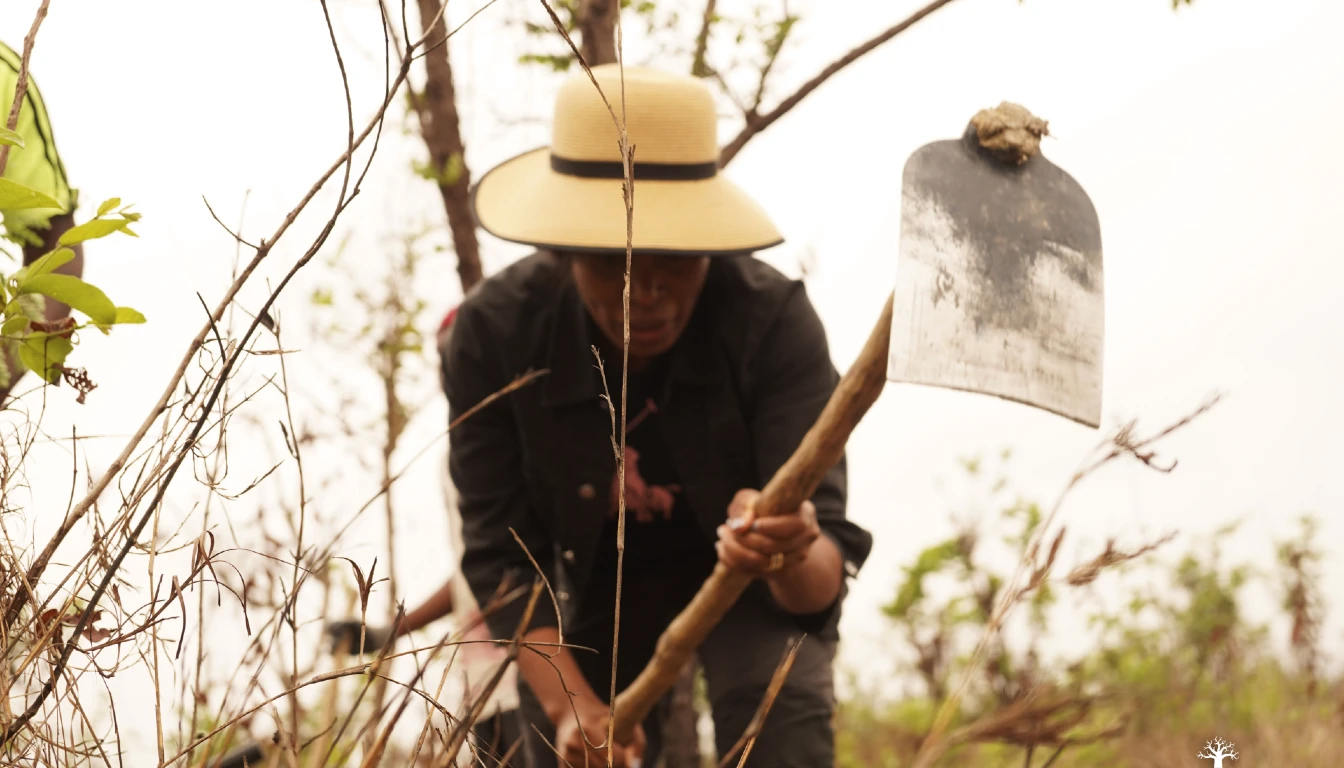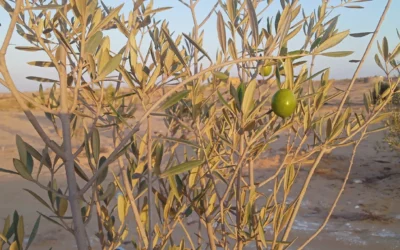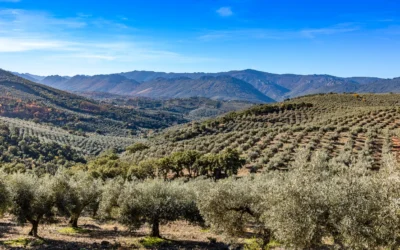Adrianus Hulsbos, Co-Founder of Dimarjan, explains how the company delivers agroforestry-based carbon dioxide removals using blockchain technology
What problem is Dimarjan solving, and why does it matter?
The world is facing three massive interconnected problems:
- Climate Change – CO2 levels are rising, and traditional offset markets are full of greenwashing.
- Land Degradation – Deforestation and poor land management are turning once-productive areas into wastelands.
- Rural Poverty – Local communities in Angola, and many other regions, are left out of the climate economy.
At Dimarjan, we’re tackling all three by combining regenerative agroforestry, carbon dioxide removals CDR, and blockchain-backed verification. We don’t just plant more trees. We restore ecosystems while creating jobs, improving soil health, and generating verifiable, high-quality carbon dioxide removals for companies serious about their climate commitments.
What technology/innovation are we bringing to this field?
We’ve taken a high-tech blockchain meets hands-in-the-soil approach to carbon dioxide removals:
- Agroforestry-Based Carbon Dioxide Removals – We plant mixed fruit-bearing and non-fruit-bearing trees with intercropping (cassava, sweet potatoes, beans, corn) to sequester CO2, boost biodiversity, and improve soil quality.
- Satellite Monitoring & Blockchain – Every agroforestry system is linked to an NFTree (Non-Fungible Token), ensuring that carbon sequestration is:
- Trackable in real-time – No more unverifiable claims.
- Tamper-proof – Data is recorded permanently on the blockchain.
- Fully transparent – Anyone can verify the impact of each tree planted.
- Biochar for Carbon Storage – We’re piloting biochar production to lock in carbon for centuries while improving soil fertility for better crop yields.
Unlike traditional carbon credits, our approach is 100% impact-driven. Companies that invest in Dimarjan know they’re funding real, measurable, and long-lasting CO2 removal. Check out Partnership with Dimarjan – Unimission AG
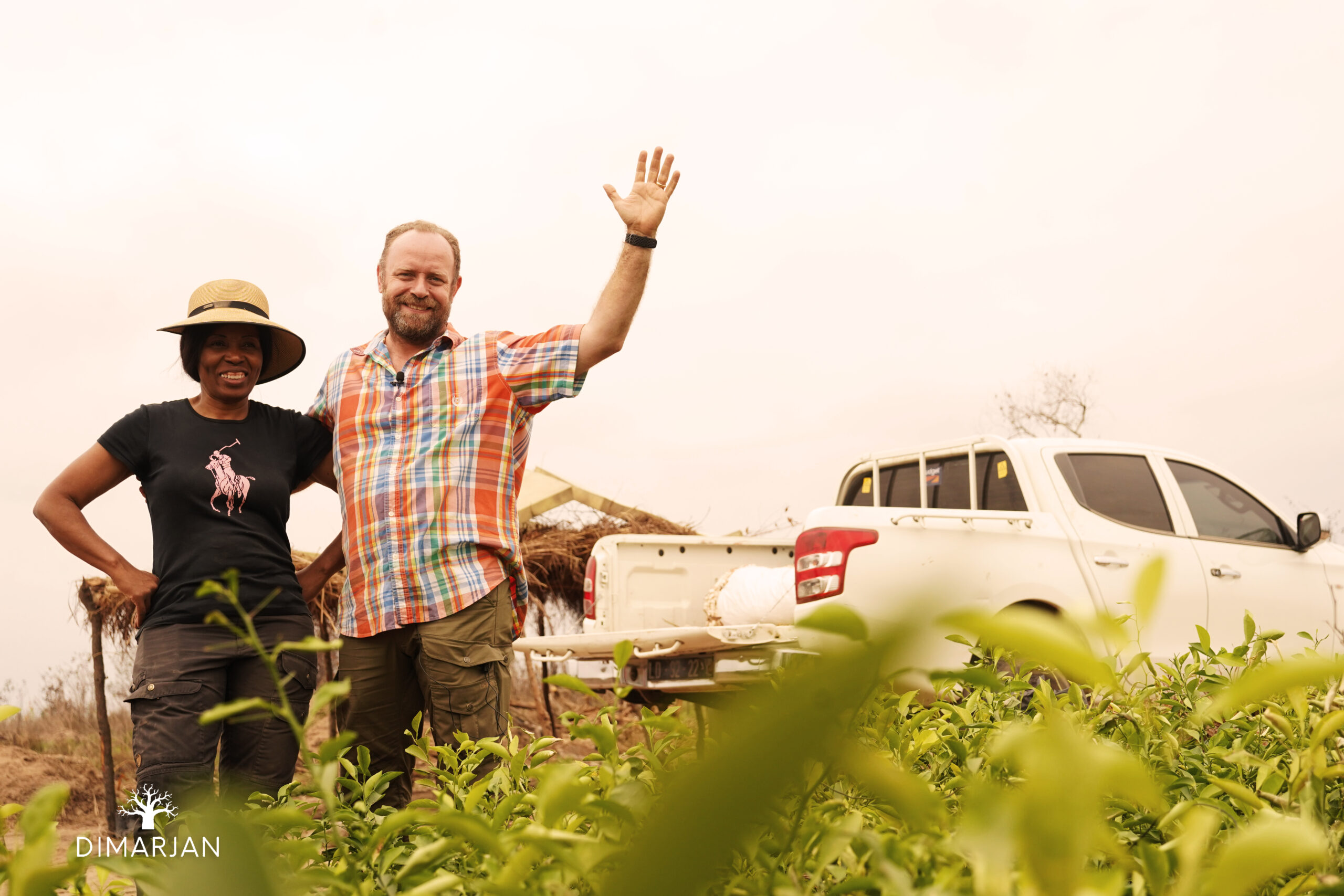
Adrianus Hulsbos, right.
What stage of commercialization are we at? Who are your backers?
We’re already operational and scaling fast:
- 2,000 hectares under management
- 100 hectares fully developed with 31,500 agroforestry systems
- 600 tonnes of CO2 sequestered in 2024
- Clients have already compensated 77 tonnes of CO2
- Selling verified carbon dioxide removals to businesses
We’re verified by the Global Carbon Standard and backed by our technology partner Carbify, a leader in blockchain-based carbon tracking, and supported by partners like Unimission, ECOTA, and AgroEcology Map. Please check out attached Impact Report 2024 for more details.
What’s next?
Looking ahead, our goals for 2025 are:
- Scaling Agroforestry: Expanding from 100 to 400+ hectares, growing 120,000 agroforestry systems, and removing 20,000 tonnes of CO2.
- Strengthening Partnerships: Working with corporate buyers, investors, and research institutions to accelerate impact.
- Empowering Local Communities: Creating more jobs, boosting food security, and fostering local leadership.
- Advancing Biochar & Soil Health: Implementing biochar initiatives for long-term carbon sequestration and soil regeneration.
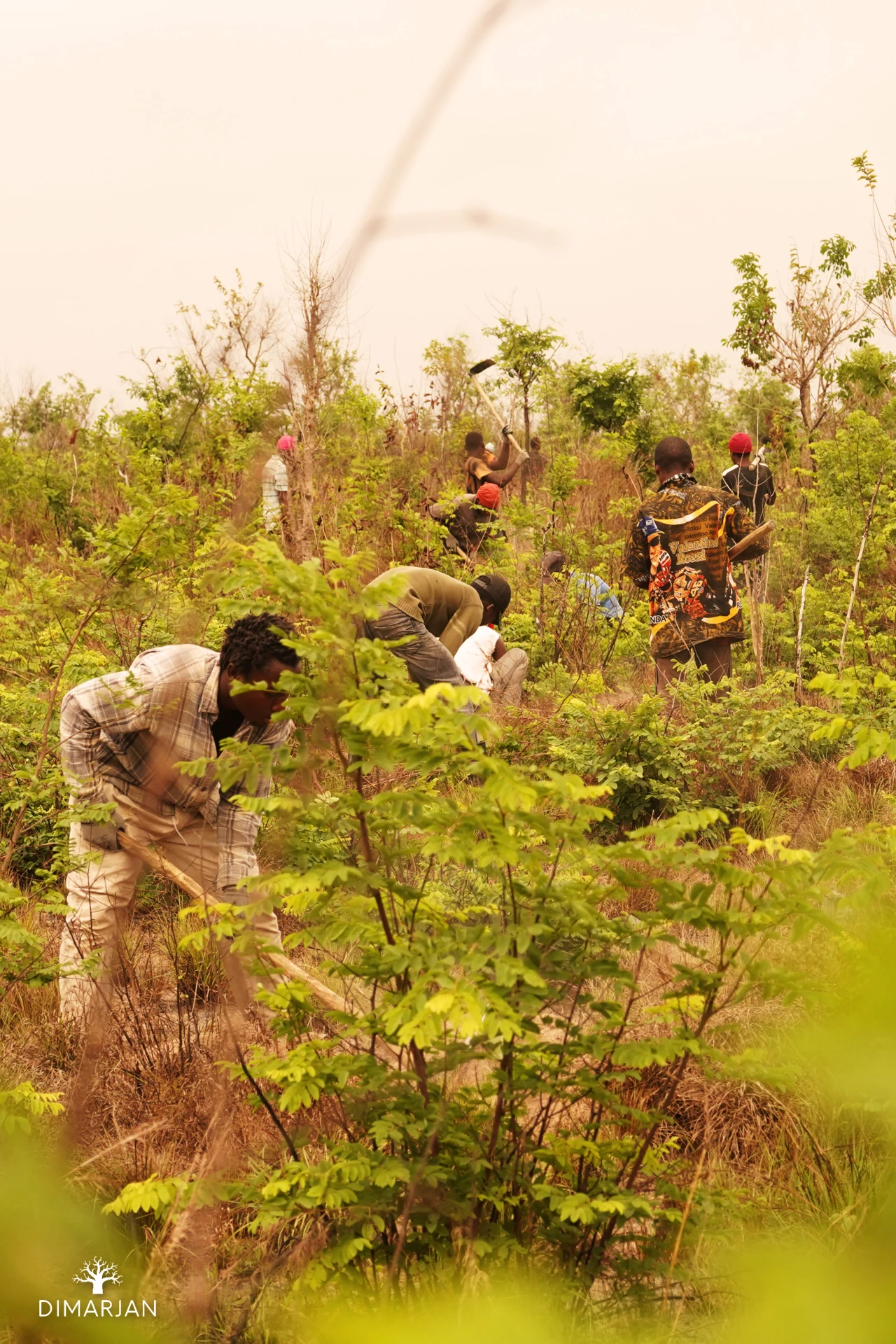
How does Dimarjan contribute to environmental sustainability?
If it isn’t clear already by the answers above, our impact goes beyond just removing CO2. We’re building entire regenerative ecosystems.
- Reversing Desertification & Restoring Soil – Our agroforestry systems bring life back to degraded lands, improving soil structure, water retention, and long-term fertility.
- Boosting Biodiversity – By planting a mix of native trees, fruit trees, and intercropped crops, we’re creating balanced ecosystems that support wildlife and pollinators.
- Enhancing Water Retention & Land Resilience – Agroforestry prevents soil erosion, increases water absorption, and helps restore the natural hydrological cycle—essential in regions prone to drought.
- Improving Livelihoods & Food Security – Our projects directly benefit 35 families and indirectly impact 100+ people by creating jobs, income stability, and community resilience.
Our model is fully regenerative. Every tree we plant does more than capture carbon. It feeds people, protects biodiversity, and builds climate resilience for future generations.
What are the key challenges we face?
Like any fast-growing impact venture, we’re navigating some major challenges:
- Scaling Up – Expanding from 100 to 400+ hectares takes capital. We’re actively looking for investment partners and grant funding to accelerate our growth.
- Market Access & Fair Pricing – The voluntary carbon market is still dominated by cheap, low-quality offsets. We’re working to educate buyers on why investing in high-integrity, wide social impact covering most UN SDGs, nature-based removals is the right move.
- Verification & Certification Delays – While we already meet the Global Carbon Standard which is now also recognized by the SBTi, we are still awaiting the ICROA and ICVCM adoption. We have received confirmation that the Global Carbon Standard meets all requirements, except for the time that the GCS has been in existence. In addition, some buyers, like large corporates require 5+ years of project history before full accreditation. We’re tackling this by focusing on transparency, independent monitoring, and strong partnerships.
- Adoption of the Global Carbon Standard (GCS) as a Young but Strong Standard – Another hurdle we face is that the Global Carbon Standard (GCS) is still relatively new, even though it’s built on robust methodologies that ensure transparency, additionality, and permanence. Many buyers and industry players are naturally risk-averse when it comes to adopting newer standards, preferring to stick with legacy registries like Verra (VCS), Gold Standard, or ACR, simply because they have a longer history. However, being new doesn’t mean being weak. In fact, GCS is one of the strongest standards available, with continuous monitoring for real-time verification of agroforestry projects, a focus on true removals, not just avoided emissions and above all Blockchain-backed transparency, ensuring credits are fully traceable and tamper-proof
What do we need to overcome them?
Scaling Up – Through Project Investment Opportunities through Impact Investors with strategic Off-Take agreements
- For example, an impact investor could partner with Dimarjan to expand agroforestry operations from 100 to 400 hectares, increasing carbon removal capacity from 5,000 to 20,000 tonnes of CO2 per year. The investor not only provides project financing but also leverages their corporate network to secure long-term carbon credit buyers. In this case the investor facilitates a five-year off-take agreement with a major multinational (e.g., a Fortune 500 company with net-zero commitments) for at least 15,000 tonnes of CO2 annually. This guarantees revenue and de-risks the investment, allowing Dimarjan to:
- Scale agroforestry systems fourfold, accelerating land restoration
- Secure additional financing (e.g., green bonds, blended finance) using the off-take as collateral
- Provide stronger social impact by tripling job creation and community benefits
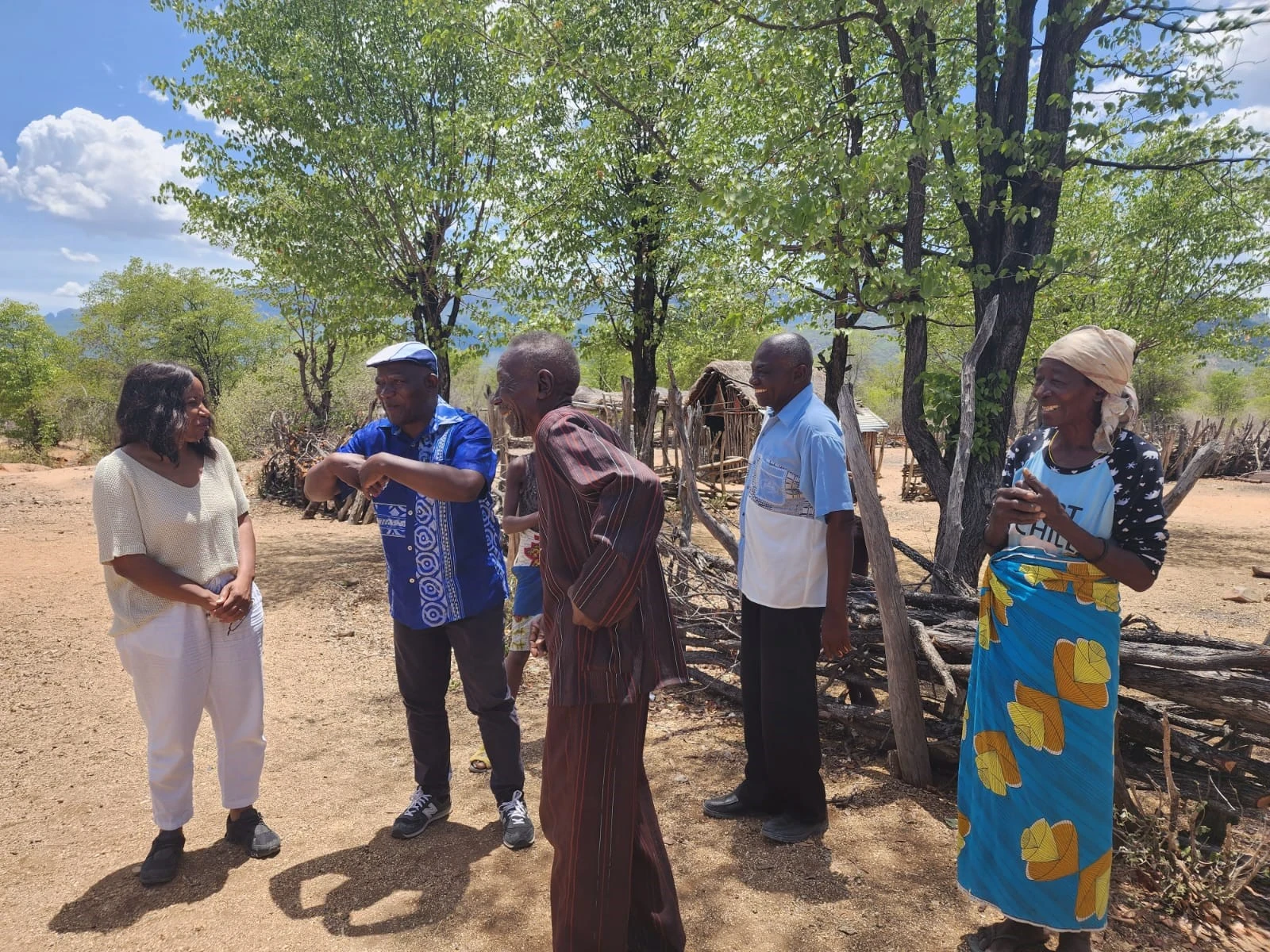
Meeting with village elders.
Market Access and Fair Pricing – focusing on Win-Win Impact
- Investor ROI: Earns revenue from carbon credit sales while making measurable climate and social impact.
- Corporate Buyers: Get reliable, high-integrity offsets that meet strict sustainability frameworks.
- Dimarjan & Local Communities: Expand agroforestry projects, restoring land while creating sustainable economic opportunities.
By structuring investments around long-term off-take agreements, the impact investor de-risks the project and enables faster, more scalable impact, making this a powerful model for climate finance and sustainable development.
Adoption of the Global Carbon Standard (GCS) as a Young but Strong Standard
- Early adopters & partnerships: We are actively engaging with progressive buyers who prioritize quality over legacy and are willing to work with high-integrity standards like GCS.
- Pooling with established standards: By collaborating with Climeworks and other DAC players, we can bundle GCS-certified nature-based solutions with other high-quality removal credits, increasing credibility and appeal to risk-averse buyers.
- SBTi recognition: Carbify’s recent accreditation under the SBTi framework helps bridge the gap, positioning GCS as an aligned and future-proof standard.
While GCS is still in its early stages, it is set to gain widespread acceptance as more buyers recognize the flaws in traditional registries and seek higher integrity solutions. With continued advocacy, education, and strong verification mechanisms, GCS is well-positioned to become a leading force in the Voluntary Carbon Market. Dimarjan is proud to be at the forefront of this movement, ensuring that every credit sold is real, additional, and impactful.

